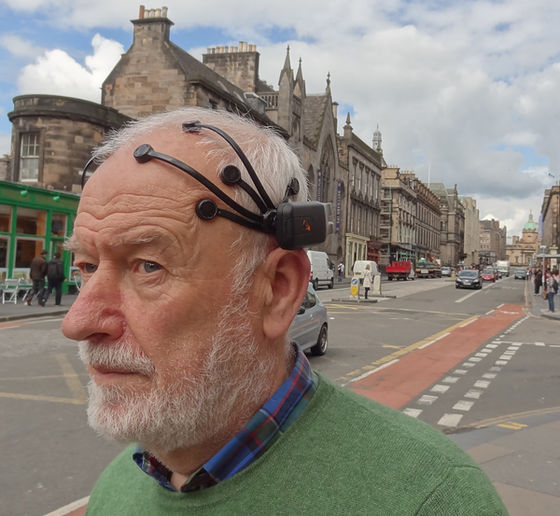A photograph of "One atom trapped in a magnetic field" photograph which was chosen as a prize in the science photography contest

BritishEngineering / Physical Science Research Council(Engineering and Physical Sciences Research Council:EPSRC) First place in the "Equipment & amp; Facilities" category of the science photography contest sponsored by the science photography contest, "Single Atom in an Ion Trap" which made it possible to see atoms that should not be seen in a visible form (One atom captured by an ion trap).
Single Trapped Atom Captures Science Photography Competition's top prize - EPSRC website
https://www.epsrc.ac.uk/newsevents/news/single-trapped-atom-captures-science-photography-competitions-top-prize/
Picture of a Single Atom Wins Science Photo Contest
https://petapixel.com/2018/02/12/picture-single-atom-wins-science-photo-contest/
This work was filmed by David Nadlinger enrolled at Oxford University. Works capture charged particles by combining electric and magnetic fieldsIon trapIt contains a state that strontium atoms are shining very small in a device called "

The strontium atoms are positively chargedLaser cooling, It is cooled to a state close to absolute zero and confined in the magnetic field of the ion trap created in the gap between the two needles with a gap of only 2 mm. When irradiating with blue-violet laser light, atoms absorb energy and re-emit as light. The moment is called a digital single lens reflex camera "Canon 5D Mark II"When"Canon EF 50 mm f / 1.8This picture is taken with a long time exposure with using.

In other words, the atom is originally too small to be seen with the naked eye or a normal camera, but by fixing the atoms and releasing the light in a special way, it proved that its existence in a visible form It is a work. In order to solve the problem of noise which is a big problem of "quantum computer" which is expected to be realized in the future, the technology of fixing atoms is expected to be utilized as a method for stacking atoms to create "wall" It is said that.
In addition to this, "Eureka & Discovery", "People & Skills" "Innovation" "Weird & amp; Wonderful" "Awarded works have been announced in four divisions in total. The best awards of each work are as follows.
◆ Eureka & Discovery (Eureka and Discovery) Category: "In a kitchen far far away ..." (In the far away kitchen ......)
It was taken of a pattern arising on the foam of the spherical soap made in the kitchen sink. The two color parts shown in the picture show the physical phenomenon of how bubbles form and behave in substances like lubricants and beverages. In addition, the name of the work is twisting "a long time ago in a galaxy far, far away ... (distant past, in far away from the galaxy ... ...)" which appears at the beginning of the movie "Star Wars" series I will.

◆ Innovation department: "Microbubble for drug delivery" (microbubbles to transport drugs)
Micron-sized bubbles coated with nanosized liposomes containing drug. To explore the use of microbubbles for therapeutic use and to improve the delivery of drugs to disease targets such as tumors.

◆ People & Skills category: "Spiderman on George IV Bridge: EEG testing with an older volunteer on a busy Edinburgh street" (Spider-Man at the George IV bridge: elderly volunteers testing EEG at Edinburgh Street) )
A volunteer man walking on a George IV bridge in the city of Edinburgh, the capital city of Scotland, wearing an electroencephalograph (EEG) headset to record brain activity. Researchers use EEG to measure the aged 's neural responses to various outdoor urban environments, from busy roads to quiet parks.

◆ Weird & amp; Wonderful Category: "Natures Nanosized Net for Capturing Color" (a nano-sized network made by nature to create color)
A nano-sized structure that captures the sun's rays in a butterfly's feather and creates a dazzling array of colors.

Related Posts:







